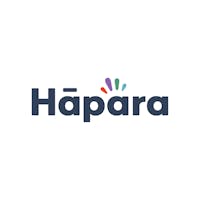Grade 9 Geography was in trouble. Students didn’t like the traditional textbook-and-worksheet-centric course, and their teachers and district staff were concerned that a lack of engagement was translating into lower grades at Canada’s Ottawa Catholic School Board’s (OCSB) high schools. The Board wanted to help teachers better engage students; to do this effectively, it needed clearer insight into teacher needs. Leveraging its technology investments, OCSB got that insight—as well as a brand new geography curriculum that increased student engagement and collaboration.
With eighty-five schools and more than 41,000 students, OCSB serves a diverse urban population. Over the past six years, the Board has invested in technology to improve learning outcomes for all of its students—starting with G Suite for Education and Chromebooks. Schools then added the Hapara Suite of apps, using the Analytics app to drive towards OCSB's 2020 BluePrint for Change and ensure that students and staff have the necessary support they need.
OCSB teacher Audra Abromaitis, supported by a team of consultants, learning partners, and technology integrators, rewrote the entire Grade 9 Geography course. Their goal was to curate and create multimedia content that would revitalize student interest, and support differentiated learning for students of all abilities. They built the course using a number of G Suite apps, which allowed them to include a wide range of pedagogical resources and enabled teachers to customize their classes, even down to the student level. The finished product was a highly personalized and engaging project-based course.

OCSB teacher Audra Abromaitis; full size image here
Abromaitis was particularly excited about how she was able to use Hapara’s Workspace to structure and differentiate the resources and assignments for her students. For example, within Workspace students can examine whether their own neighborhoods are livable communities. They can:
- take pictures in their neighborhoods
- use the My Maps application to embed the pictures into Google Maps
- add relevant descriptions
- share their customized maps with each other online
- use Workspace to analyze and present their research

Hapara's Workspace; full size image here
When asked about this deeper engagement, Abromaitis describes how Workspace enables her to differentiate her course, particularly for the many English language learners who attend her high school:
“I can populate my students’ Dashboards with articles appropriate for their levels of language acquisition, and modify their homework—simultaneously assigning a Geography vocabulary matching exercise to my English learners and a more in-depth reading assignment to my native English-speaking students.”
Moreover, while students are sitting in class working on their assignments, Abromaitis can give instant feedback to them individually. She comments on their work in real time, doing everything from correcting simple grammar mistakes to providing links for students struggling with particular material. It’s a fast, efficient, iterative, and highly interactive process—and it empowers students to take control of their own learning in a way not possible in traditional classes.
The Board also wanted to foster deep engagement and collaboration between teachers and students. OCSB staff’s intuition was that more engagement would translate into greater student success, and ultimately, higher assessment scores. While the Board had anecdotal evidence, Analytics gives them more direct visibility into some of the key metrics around student engagement and digital feedback.
Since the Board’s 1:1 Chromebook initiative launched in 2015, Abromaitis’s high school made clear progress. The number of students engaged in writing in Google Drive increased significantly, as did the depth of their engagement in writing.

# of students writing and composing in Google Drive (light green = less than 1 hour/week; dark green = more than 1 hour/week); full size image here
What’s more, an increasing number of students at the school participated in a meaningful digital collaborative experience with their peers. There is still room for improvement, however. The data shows that there are still some students left behind, and others who would benefit from additional collaborative writing activities.

# of students collaborating digitally on school assignments; full size image here
Rob Long, Coordinator of Learning Technologies at OCSB, wants to make sure more students and teachers have a digital experience like the one in Abromaitis’s class:
“We believe that the deeper engagement that’s afforded by our digital platform will help our students—both academically and otherwise. For the first time, we are able to measure this quantitatively, without surveys or invasive in-class monitoring efforts. Near-real-time visibility to these trends is just the beginning. Our teachers, like Audra, want any opportunity to meaningfully increase student engagement and OCSB is committed to making this happen.”



